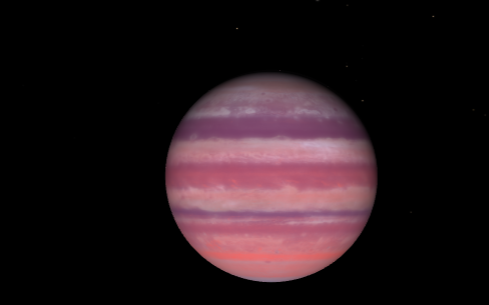Our Terms & Conditions | Our Privacy Policy
Kepler-139f: The massive planet that remained ‘invisible’ to scientists for years
Astronomers have recently discovered a massive exoplanet, Kepler-139f, hidden within a known star system. This Neptune-sized planet, 36 times the mass of Earth, eluded detection until 2025 due to its inclined orbit, which prevents it from transiting its star from Earth’s perspective.  It is well known that the universe still hides millions of secrets that remain to be discovered from the dark silences of spaceRecently, astronomers made a discovery hidden in plain sight. Despite orbiting a star system already known to host several planets, this giant exoplanet somehow evaded detection for years.Astronomers announced the discovery of Kepler‑139f, which is a massive exoplanet approximately 36 times the mass of Earth, around twice as large as Neptune, yet it stayed invisible until 2025. Orbiting a G‑type star similar to our Sun, Kepler‑139f completes one orbit in about 355 days, roughly at 1 AU distance, as reported in a study published in The Astrophysical Journal Letters.
It is well known that the universe still hides millions of secrets that remain to be discovered from the dark silences of spaceRecently, astronomers made a discovery hidden in plain sight. Despite orbiting a star system already known to host several planets, this giant exoplanet somehow evaded detection for years.Astronomers announced the discovery of Kepler‑139f, which is a massive exoplanet approximately 36 times the mass of Earth, around twice as large as Neptune, yet it stayed invisible until 2025. Orbiting a G‑type star similar to our Sun, Kepler‑139f completes one orbit in about 355 days, roughly at 1 AU distance, as reported in a study published in The Astrophysical Journal Letters.
So, why was such a large planet missed for so long
The key to its secret lies in its unusual orbit. NASA’s Kepler Space Telescope, which discovered thousands of exoplanets through the transit method, only detects planets that pass directly between the star and Earth, causing slight dips in starlight. Kepler‑139f’s orbit is inclined, so it never transits from our vantage point, remaining invisible to the primary detection method.
What method did scientists use this time
To find out Kepler‑139f, scientists used a combination of radial velocity (RV) and transit timing variations (TTVs). RV measures how a star wobbles due to gravitational pull from orbiting planets, while TTVs capture irregularities in known planets’ transit timings caused by unseen companions. As Caleb Lammers, a graduate student in the Department of Astrophysical Science at Princeton and co-author of the study, told Space.com, “When you observe TTVs that cannot be attributed to the known planets, you can be fairly confident that there is an unseen body in the system”.After the 2023 discovery of Kepler‑139e, scientists went back and rechecked earlier data using RV and TTV methods. This helped them spot Kepler‑139f, hidden between the smaller planet Kepler‑139c and the gas giant Kepler‑139e. According to Lammers, “Many planetary systems likely host invisible worlds—particularly in their distant orbits.” Since traditional planet-hunting methods rely on perfect orbital alignment with Earth, many such planets can go unnoticed. That’s why using a mix of techniques like RV, TTV, and upcoming missions like ESA’s PLATO, launching in 2026, will be important in finding more of these hidden, massive worlds.
Images are for reference only.Images and contents gathered automatic from google or 3rd party sources.All rights on the images and contents are with their legal original owners.


Comments are closed.